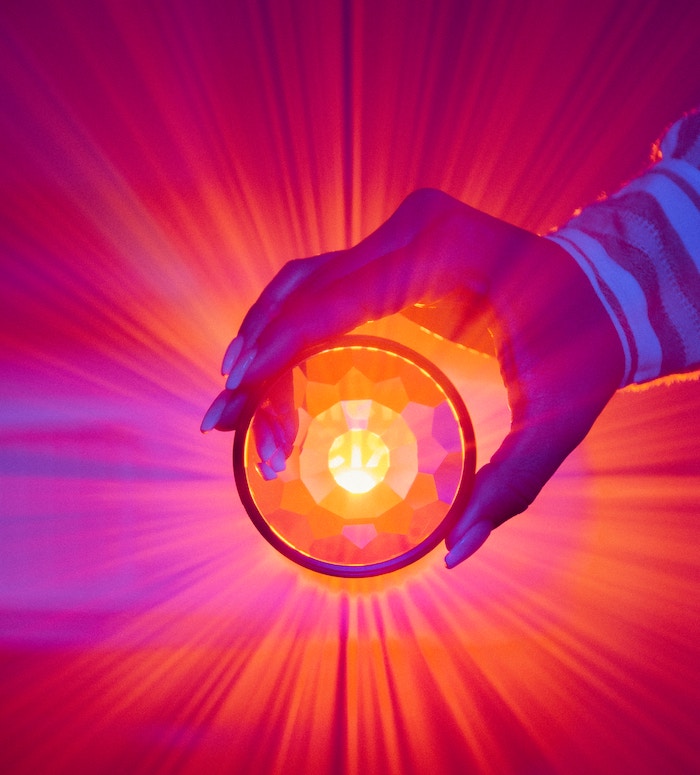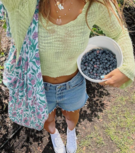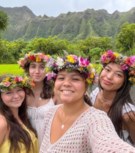LIFE
Get Inspired
Identity kaleidoscope: Real girls' lessons from being bicultural

What do you see when you put your eye to a kaleidoscope? Tons of different little colors coming together to make a unique pattern. As you turn the kaleidoscope, however, the pattern can change. And if someone else looked inside, they might describe the pattern in a different way. This is exactly how we can view our identities.
As a Colombian American, I've spent a lot of time feeling confused about how I should identify. Questions like "Am I American enough for the people around me?" and "Is my Spanish good enough for my Colombian family?" would constantly run back and forth in my head.
Being bicultural can sometimes feel like you're stuck between two worlds, but it definitely has taught me how identities are made up of *so* many different, colorful parts.
What exactly is Biculturalism?
The word bicultural refers to a person that has a blend of two different cultures—one they experience at home, aka their heritage, and another they experience where they live. Being bicultural can totally be expressed in different ways, and it isn't the exact same for every person who identifies. For some, being bicultural can look like learning English and another language, while for others it's more about having different traditions.
The importance of spreading cultural awareness
Kenza S., 19, recalls the tensions between her mom's side of the family (which is Algerian) and her dad's side of the family (which is American). When Kenza talked to her mom in French, her paternal grandma made hurtful comments. "She once said, 'This is America, speak English,'" Kenza shares. Already feeling embarrassed about her Algerian culture growing up, comments like these stung—and made her feel like "other."
From learning French fluently to even getting a traditional Algerian tattoo, Kenza now sports her Algerian side with pride and fights the stigma of being "other." She adds that learning to love her Algerian culture has helped her stand up to others who might not be understanding. "Don't be embarrassed! We need young people to voice their own opinions. There is power in learning and spreading cultural information," she says.
Embrace yourself and embrace change
When In the Heights came out, Esmeralda M, 19, was beyond ecstatic to finally have her Dominican side represented on the big screen. Growing up in Washington Heights, N.Y., a place she calls the "hub" for Dominicans, Esmeralda felt a major culture clash when she moved to a predominantly white university. "I realized that the American culture I thought I knew wasn't enough to allow me to make new friends easily," she adds.
As a student journalist and the co-host of her own radio show, Esmeralda says that despite some of the college challenges at first, having two cultures gives her two different approaches to life and helps her make the most of the changes thrown her way. "Being bicultural is embracing those differences in your life that make you grow as a person."
Community is everything
When Mayka C., 21, started working in the pharmacy industry, she was quickly surprised at how many of her patients were members of the Latine community. As a Colombian-American, Mayka learned Spanish at home and remembers having to translate for her parents.
This experience has helped her interact with her Latine patients in an accessible way and see how critical a sense of support is when you're part of a marginalized group. "I definitely have been able to empathize with my immigrant patients more because I've had that experience at home and know what it's like."
For Anoushka B., 18, building a community was harder in the U.S. than it was when she lived in India. "I didn't even know one of my neighbors until they came to my grad party, and I still don't know the guy that has lived across the street for seven years," she adds. Realizing how her family has struggled to form the same connections and friend groups like the ones they had in India, Anoushka says that her Indian culture has helped her understand how having a community helps you fit in. "You just feel less isolated and more integrated into society in a very genuine way," she adds.
No matter what, only *you* can define yourself
Whether or not you're bicultural, your identity and what you learn on the way is entirely up to you! You don't have to be more of one thing or less of another. Those colors on a kaleidoscope are just like all the moments that have built up in your life. With every twist and turn, good or bad, a new color is added. On their own, these moments are vibrant, but combined together, they blend to make up someone so special—you. So embrace your colors and stay uniquely you.
All GIFs via GIPHY
POSTED IN LIFE, Get Inspired

 become a contributor
become a contributor


















